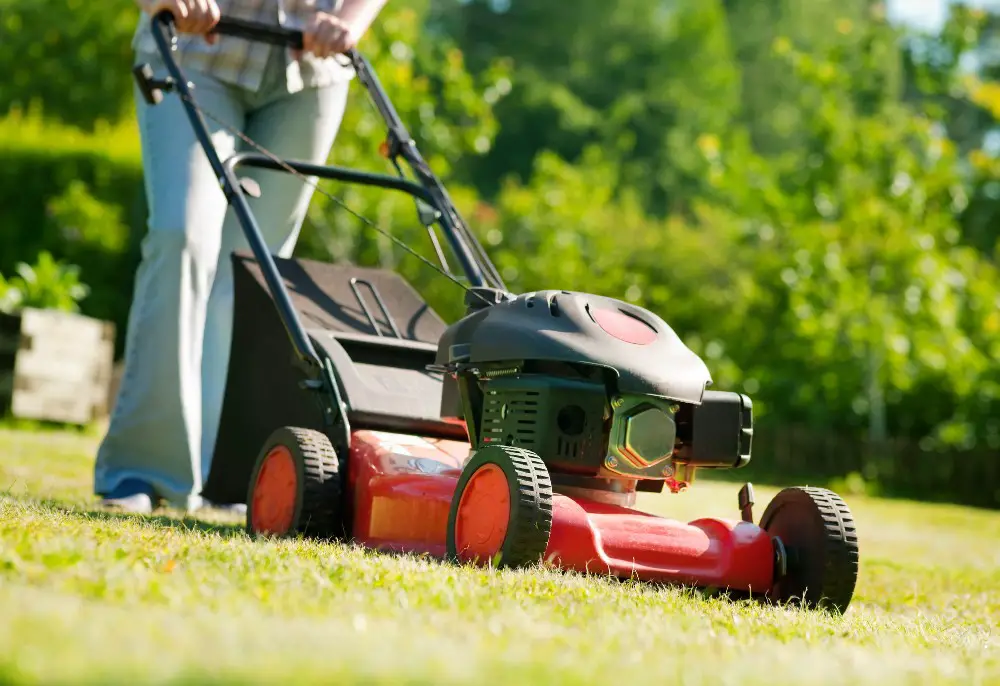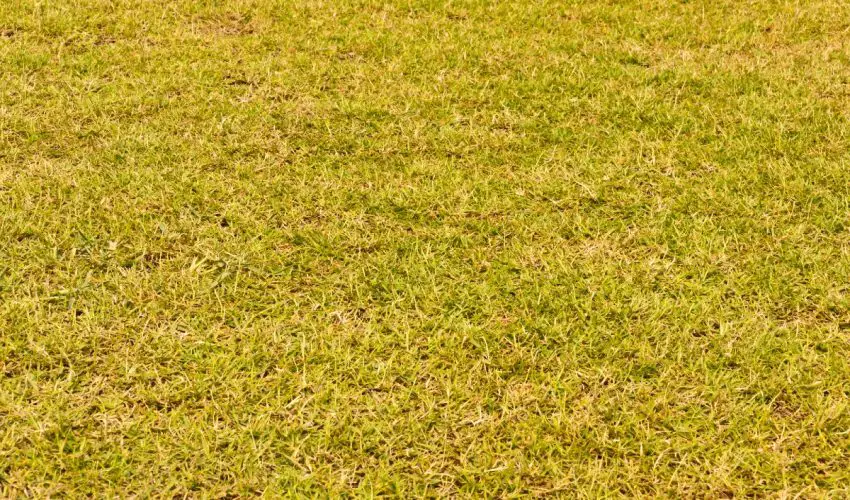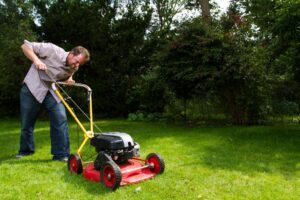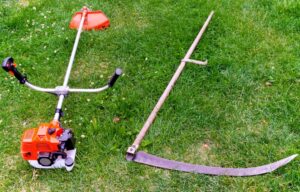One of the most common reason that grass turns yellow is because you mow too much of the grass in one session.
As a rule of thumb, you should never mow more than one-third of the grass at a time.
Though this is often the cause of yellow grass, other reasons could be nutrient deficiency, hot weather or dull lawn mower blades. Keep on reading to learn more about the most common reasons grass turn yellow and how you can prevent it from happening.
Table of Contents
ToggleWhy Does Grass Turn Yellow?
There are several possible reason why the grass in your lawn may turn yellow after mowing. Below are some of the most common causes:
1. Cutting The Grass to Short
The sheaths of the grass should never be cut by the lawn mower. Mowing at the proper height prevents the yellowy sheaths from being exposed by removing too much green leaf blade.
During mowing, never remove more than one-third of the overall grass height. For example, if you want a 3-inch-high lawn after mowing, mow it when it reaches no more than 4-inches in height. If your grass gets out of hand and becomes tall, don’t cut it too short, as this exposes the sheath and eliminates the green sections of the leaf blades.

2. Dull Lawn Mower Blades
When you use the blade frequently, the blade’s efficiency decreases. When the blades aren’t sharp enough, they tear the grass rather than cut it. As a result, you will not obtain the desired outcome. When grass is cut off, it tends to turn yellow within a short period.
The best method to prevent this is basically to keep an eye on your lawn mower’s blade sharpness and sharpen the lawn mower blade we needed. A good rule of thumb is to check the blade after each time you you’re mowing your lawn to make sure it’s in good shape for the next mowing the next time.
3. Low-Quality Soil
Low-quality soil that drains too quickly or don’t have insufficient water can cause your grass to turn yellow after it has been mowed. Sandy soils are particularly prone to this issue as they tend to drain more quickly than other types of soil. To fix this, you can add organic mulch or compost into the upper layers of the soil to help it retain more water, or you can water those areas more frequently.
4. Long Periods of Hot Weather
Your grass loses a lot of water during long periods of hot weather. Part of this is because it has to release moisture through evapotranspiration to stay cool and maintain its internal processes. This could indicate that your lawn’s root system is shallow.
You can water your lawn to restore color, but to address the base of the problem and limit the likelihood of it happening again, you’ll need to encourage your grass to root deeply. To achieve this, water deeply and infrequently. When grass is already stressed, cutting it might exacerbate the problem, resulting in yellow tips. Make up for it by lifting your mowing deck and/or mowing less frequently during hot weather.
5. Nutrient Deficiency
If the soil lacks essential nutrients such as nitrogen, potassium, and phosphorous, the grass will become starved of these minerals and begin to yellow. This is especially important in acidic soils, which don’t retain minerals as readily.
To ensure a lawn is healthy and vibrant, it’s important to test the soil and add organic matter such as compost or manure. This will replenish the soil with essential nutrients and help keep a greener and healthier lawn.
How to Fix Yellow Grass in the Lawn?
You can treat the soil with compost. It can help with issues like poor drainage and maintaining adequate pH levels. Fertilizer can also aid in the restoration of a yellow lawn. A good fertilizer product can replace nutrients such as nitrogen that are deficient in the soil.
How to Prevent Grass From Turning Yellow
The best way to prevent lawn grass from turn yellow is a combination of proper fertilization, watering, mowing, and weed control.
It’s important to use a fertilizer specifically formulated for your type of grass and the climate in which you live, as using an incorrect fertilizer can have the opposite effect and make more harm then good. Water your lawn 1-2 inches per week in the morning so it has time to dry before nightfall, mow at a height of 2-3 inches, and remove weeds immediately. With regular lawn care, you can enjoy a healthy lawn all season.
Does Too Much Water Make Grass Turn Yellow?
Yes, too much water can make grass turn yellow. This is a common problem known as “Overwatering“. When this happens, the roots of the grass become suffocated by too much water and cannot absorb enough oxygen to survive.
Without oxygen, they are unable to take up nutrients from the soil and the grass will begin to turn yellow or brown. The damage can often be permanent, so it is important to water your lawn properly.
Most lawns need about 1 to 1.5 inches of water per week. It’s important to water deeply and infrequently, allowing the water to penetrate deep into the soil and reach the roots of your grass. Watering too often or in shallow amounts can create a buildup of moisture on the surface without reaching the roots of your lawn.
If you’re having trouble with a lawn that’s been over-watered, Here’s our best tips on how to dry out a wet lawn.
Conclusion
The yellowing of grass can be the result of a variety of issues, ranging from mowing too short, to nutrient deficiencies in the soil. Knowing what is causing the yellowing of your grass is essential to address and fix the problem and restore your lawn to its former green glory.
With the right techniques, you can easily repair any yellow patches in your lawn and have it looking lush and healthy again.




